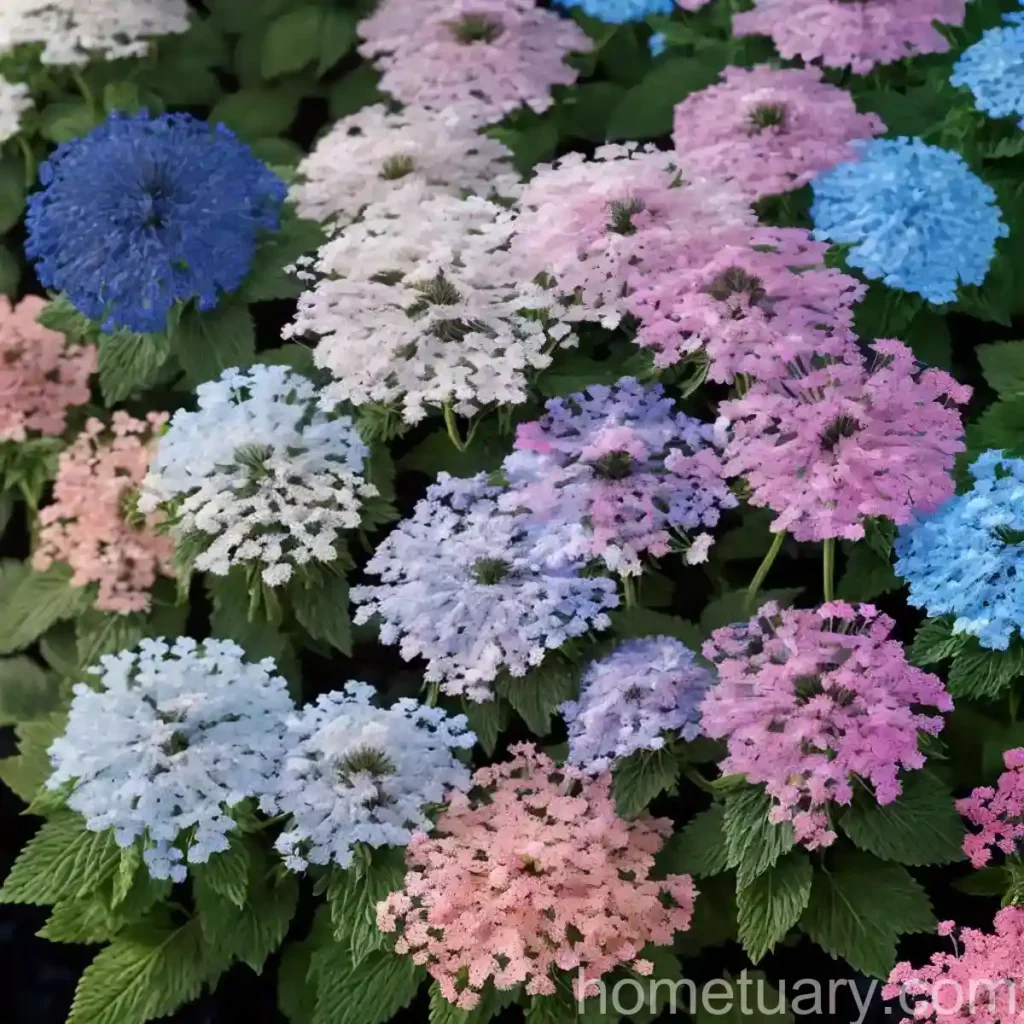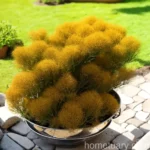All About Floss Flower (Ageratum houstonianum ‘Blue Horizon’)
In the world of gardening, the floss flower, scientifically known as Ageratum houstonianum, is a favorite among enthusiasts due to its stunning blue flowers and easy-to-care-for nature. This blog post will serve as a comprehensive guide to understanding and successfully growing the floss flower, particularly the ‘Blue Horizon’ variety.
What is Floss Flower (Ageratum houstonianum ‘Blue Horizon’)?
The floss flower, Ageratum houstonianum, belongs to the Asteraceae family and is native to Central America. It is a popular annual bedding plant known for its fluffy, powder-puff-like flowers and low maintenance requirements. ‘Blue Horizon’ is a specific cultivated variety of Ageratum houstonianum that offers striking, true blue blooms, making it a desirable addition to gardens and landscapes.
Key Takeaways
Let’s begin by understanding the key takeaways about the floss flower, Ageratum houstonianum ‘Blue Horizon’:
- Scientific Name: Ageratum houstonianum ‘Blue Horizon’
- Common Names: Floss flower, Blue Horizon floss flower
- Growth Habit: Annual
- Flowering Period: Late spring to first frost
- Sun Exposure: Full sun to partial shade
- Watering: Moderate
- Soil Type: Well-draining, fertile soil
- Height: Approximately 8-12 inches
- Benefits: Attracts pollinators, such as butterflies and bees
- Uses: Suitable for borders, containers, and mixed flower beds
Now, with the key takeaways in mind, let’s delve deeper into the culture, uses, and maintenance of the floss flower, Ageratum houstonianum ‘Blue Horizon’.
Culture
Water
Ageratum houstonianum ‘Blue Horizon’ generally prefers moderate watering. It is essential to keep the soil consistently moist but not waterlogged. Allow the soil to dry slightly between waterings to prevent root rot.
Sunlight
When it comes to sunlight requirements, floss flowers thrive in full sun to partial shade. They perform best when provided with at least 6 hours of direct sunlight each day.
Fertilizer
Ageratum houstonianum ‘Blue Horizon’ benefits from regular feeding with a balanced, all-purpose fertilizer. During the growing season, apply a diluted liquid fertilizer every 4-6 weeks to promote healthy growth and prolific flowering.
Soil
The ideal soil for floss flowers is well-draining and fertile. It should have a slightly acidic to neutral pH. Amending the soil with organic matter, such as compost, can improve its structure and fertility, which is beneficial for the growth of Ageratum houstonianum ‘Blue Horizon’.
Pruning
Pruning is not a necessity for floss flowers, but deadheading spent blooms can encourage continuous flowering and maintain the plant’s appearance. Simply remove faded flowers by pinching them off at the base of the stem.
Propagation
Ageratum houstonianum ‘Blue Horizon’ can be propagated through both seeds and cuttings. Propagating from seeds is a straightforward process and can be done indoors in early spring. When using cuttings, select healthy stems and root them in a moist growing medium, providing the right conditions for root development.
Container Popularity
Floss flowers, particularly the ‘Blue Horizon’ variety, are well-suited to container gardening. Their compact size and vibrant blooms make them a delightful addition to patio pots, window boxes, and other container arrangements.
Common Diseases and Pest Control
Disease Diagnosis
While Ageratum houstonianum ‘Blue Horizon’ is relatively resistant to diseases, it may be susceptible to powdery mildew in humid conditions. Proper spacing and adequate air circulation around the plants can help prevent this fungal disease.
Common Pests
The floss flower may attract pests such as aphids and spider mites. Regularly inspecting the plants for any signs of infestation and using organic pest control methods when necessary can effectively manage these pests.
Botanist’s Tips
As a botanist, I recommend the following tips for successfully growing Ageratum houstonianum ‘Blue Horizon’:
- Companion Planting: Pair floss flowers with other sun-loving annuals and perennials, such as zinnias, marigolds, and salvias, to create visually appealing and pollinator-friendly garden beds.
- Pollinator Attraction: Utilize floss flowers to attract beneficial pollinators like butterflies and bees, contributing to a flourishing ecosystem in your garden.
- Cut Flower Source: Harvest the vibrant blooms of Ageratum houstonianum ‘Blue Horizon’ for charming floral arrangements, bringing the beauty of the garden indoors.
- Seasonal Care: In regions with hot summers, providing afternoon shade can benefit the plants and prolong their flowering period.
Fun Facts
Here are a few intriguing and delightful facts about the floss flower, Ageratum houstonianum ‘Blue Horizon’:
- Ageratum houstonianum ‘Blue Horizon’ is named after the Greek word “ageratos,” which means “ageless,” a reference to the long-lasting nature of its blooms.
- Native to Mexico, Ageratum houstonianum has naturalized in many tropical and subtropical regions worldwide, becoming a popular ornamental plant.
Links to External Resources
For further information on growing and caring for Ageratum houstonianum ‘Blue Horizon’, consider exploring these external resources:
- The American Horticultural Society’s A-Z Encyclopedia of Garden Plants
- Royal Horticultural Society’s Plant Search
- University of Florida IFAS Extension: Ageratum production guide
Now that we have gained a comprehensive understanding of the culture, uses, maintenance, and fascinating aspects of the floss flower, Ageratum houstonianum ‘Blue Horizon’, we can confidently cultivate and appreciate this charming annual plant in our gardens and landscapes. Whether it’s enhancing mixed borders, attracting pollinators, or adorning containers, this eye-catching and easy-to-grow flower is sure to captivate the hearts of gardening enthusiasts.















